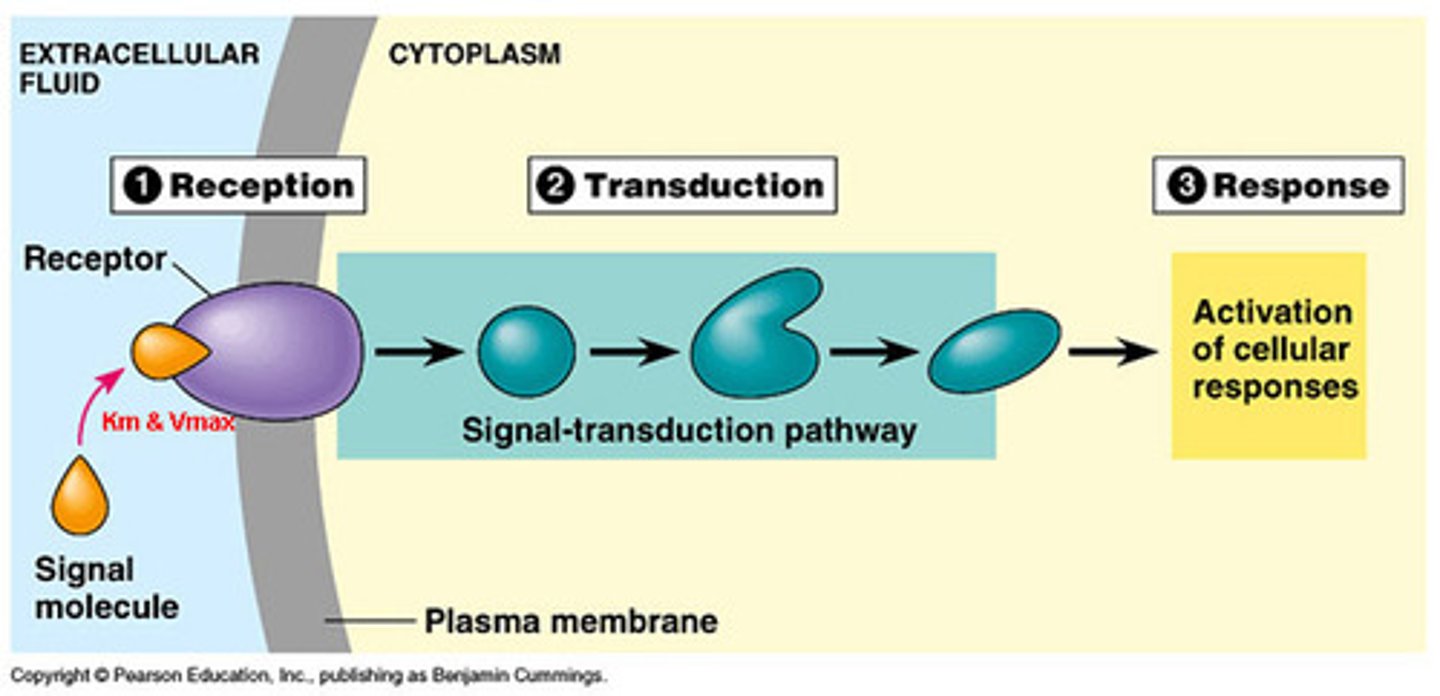openstax biology 2e: Chapter 4
1/74
There's no tags or description
Looks like no tags are added yet.
Name | Mastery | Learn | Test | Matching | Spaced |
|---|
No study sessions yet.
75 Terms
cell theory
a biological concept that states that all organisms are composed of one of more cells; the cell is the basic unit of life; and new cells arose from pre-existing cells
electron microscope
an instrument that magnifies an object using a beam of electrons passed and bent through a system to visualize a specimen (provides a higher resolving power)
why can living specimen not be viewed under an electron microscope?
the electron microscope kills the living specimen due to the electrons short wavelengths
microscope
an instrument that magnifies an object
light microscope
an instrument that magnifies an object using a beam visible light passed and bent through a lens system to visualize a specimen
- often hard to view without the process of staining
who formed the cell theory?
Matthias Schleiden and Theodor Schwann
nucleiod
central part of a prokaryotic cell in which the chromosome is found
prokaryote
unicellular organism that lacks a nucleus or any other membrane-bound organelle (bacteria and archaea)
what are the four things all cells share:
- plasma membrane
- cytoplasm
- DNA
- ribosomes
cell wall
rigid cell covering made of various molecules that protects the cell, provides structural support, and gives shape to the cell
- helps to maintain shape and prevent dehydration
conjugation
the direct transfer/contact from one bacterium to another of DNA between two cells that are temporarily joined
differences between prokaryote and eukaryote cells?
eukaryotic cells are more than 100 to 10,000 times larger than prokaryotic cells and are much more complex; the DNA in eukaryotes is stored within the nucleus, while DNA is stored in the cytoplasm of prokaryotes
- prokaryotes size allows for quick diffusion of organic particles
what is the function of the rough endoplasmic reticulum?
associated with ribosomes; makes secretory and membrane proteins
what is the function of the smooth endoplasmic reticulum?
synthesizes lipids, phospholipids as in plasma membranes, and steroids
cytoskeleton microtubules
form the mitotic spindle and maintain cell shape
central vacuole
large plant cell organelle that regulates the cell's storage compartment, holds, water, and plays a significant role in cell growth as the site of macromolecule degradation
centrosome
microtubule organizing center; region in animal cells made of two centrioles
intermediate filaments
threadlike proteins in the cell's cytoskeleton that are roughly twice as thick as microfilaments; functions is purely structural
chlorophyll
green pigment that captures the light energy that drives the light reactions of photosynthesis
plasmodesmata
channels through cell walls that connect the cytoplasms of adjacent cells
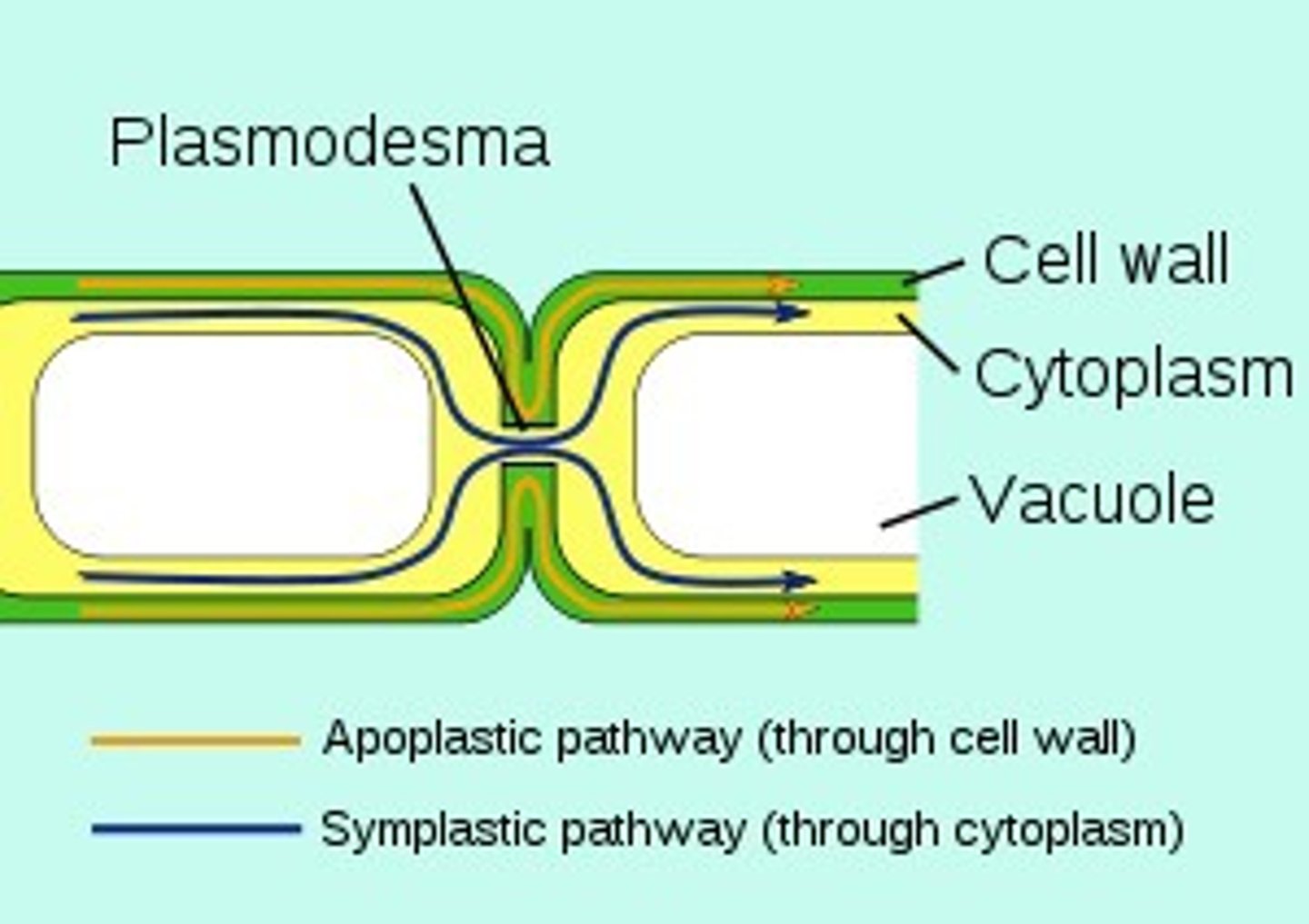
chloroplast
plant cell organelle that carries out photosynthesis
chromatin
protein-DNA complex that serves as the building material of chromosomes
chromosome
structure within the nucleus that is made up of chromatin that contains DNA, the hereditary material
cytoplasm
entire region between the plasma membrane and the nuclear envelope, consisting of organelles suspended in the gel-like cytosol, the cytoskeleton, and various chemicals (location where many metabolic reactions occur)
cytosol
gel-like material of the cytoplasm in which cell structures are suspended
eukaryotic cell
cell that has a membrane-bound nucleus ans several other membrane-bound compartments or sacs
lysosome
organelle in an animal cell that functions as the cell's digestive component; it breaks down proteins, polysaccharides, lipids, nucleic acids, and even worn-out organelles
mitochondria
cellular organelles responsible for carrying out cellular respiration, resulting in the production of ATP, the cell's main energy carrying molecule
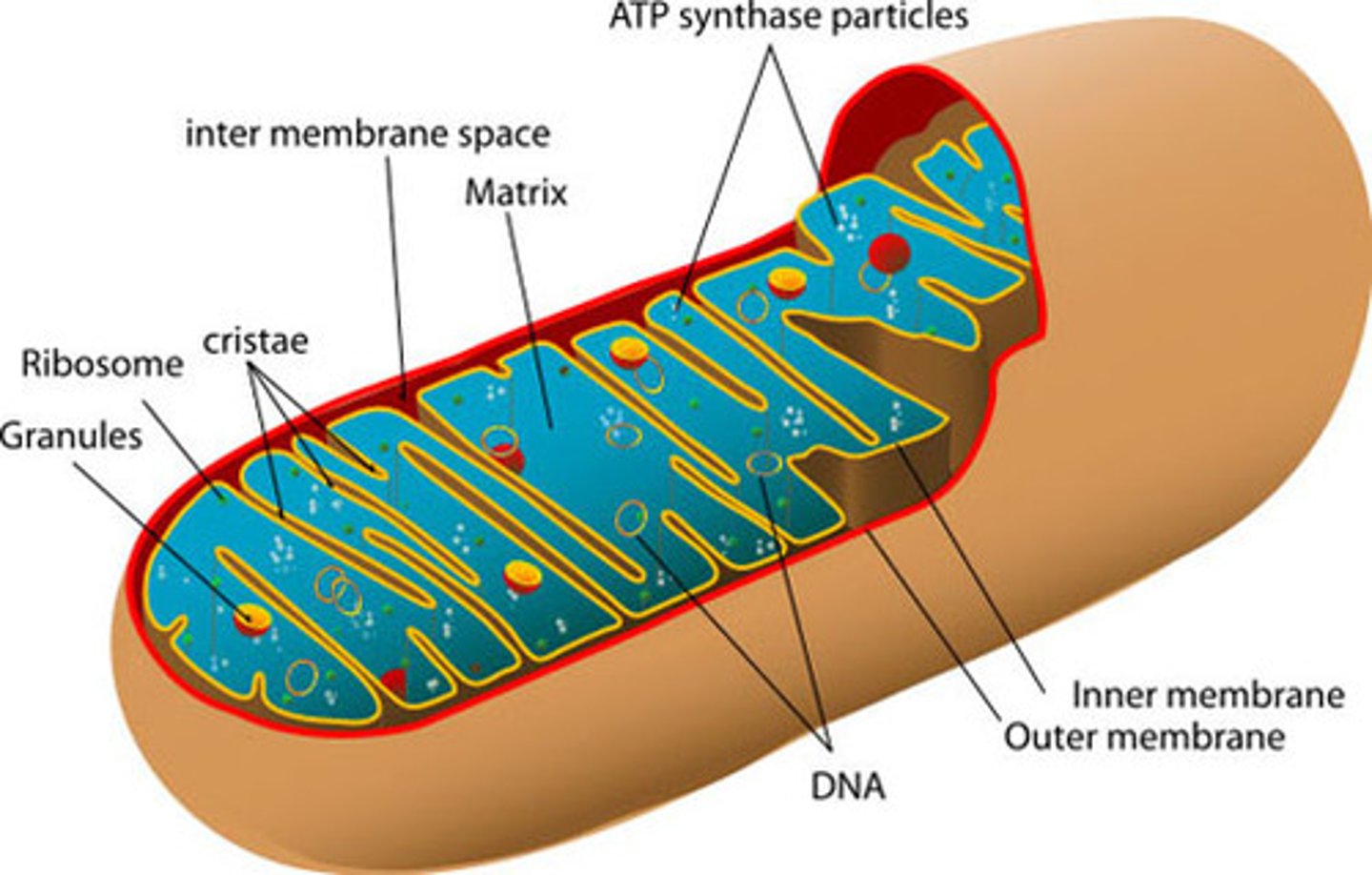
nuclear envelope
double-membrane structure that constitutes the outermost portion of the nucleus
peroxisomes
Break down fatty acids and produce hydrogen peroxide; detoxify many poisons that may enter the body
what is the subtle difference between vesicles and vacuoles?
vacuoles are somewhat larger than vesicles
lysosomes
cell organelle filled with enzymes needed to break down certain materials in the cell
what is a major distinction between plants and animals?
plants make their own food (autotrophs) and animals must ingest their food (heterotrophs)
nucleolus
darkly staining body within the nucleus that is responsible for assembling the subunits of the ribosomes
nucleoplasm
semi solid fluid inside the nucleus that contains the chromatin ans nucleolus
nucleus
cell organelle that houses the cell's NA and directs the synthesis of ribosomes and proteins
organelle
compartment or sac within a cell
peroxisome
metabolizes waste; small, round organelle that contains hydrogen peroxide, oxidizes fatty acids and amino acids, and detoxifies many poisons
plasma membrane
phospholipid bilayer with embedded (integral) or attached (peripheral) proteins, and separates the internal content of the cell from its surrounding environment
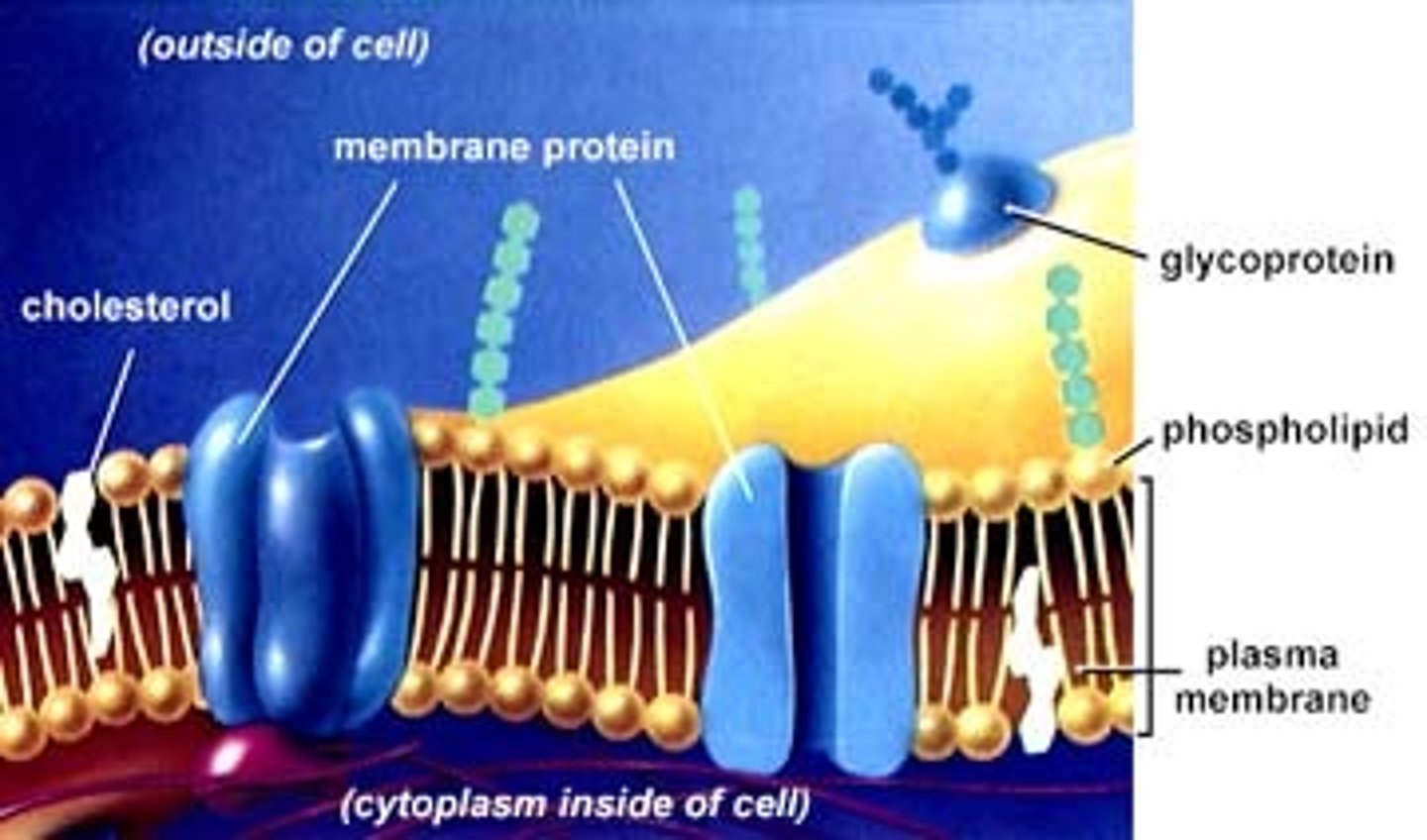
chromosomes
a threadlike structure of nucleic acids and protein found in the nucleus of most living cells, carrying genetic information in the form of genes
ribosome
cellular structure that carries out protein synthesis (electron microscopy shows that they consist of two subunits; large and small
vacuole
membrane-bound sac, somewhat larger than a vesicle, which functions in cellular storage and transport
vesicle
small, membrane-bound sac that functions in cellular storage and transport; its membrane is capable of fusing with the plasma membrane and the membranes of the endoplasmic reticulum and Golgi apparatus
endoplasmic reticulum (ER)
series of interconnected membranous structures within eukaryotic cells that collectively modify proteins and synthesize lipids
Golgi apparatus
eukaryotic organelle made up of a series of stacked membranes that sorts, tags, and packages lipids and proteins for distribution
rough endoplasmic reticulum (RER)
region of the endoplasmic reticulum that is studded with ribosomes and engages in protein modification and phospholipid synthesis
smooth endoplasmic reticulum (SER)
region of the endoplasmic reticulum that has few or no ribosomes on its cytoplasmic surface and synthesizes carbohydrates, lipids, and steroid hormones; detoxifies certain chemicals (like pesticides, preservatives, medications, and environmental pollutants), and stores calcium ions
cilium (pl. cilia)
short, hair-like structure that extends from the plasma membrane in large numbers and is used to move an entire cell or move substances along the outer surface of the cell
cytoskeleton
network of protein fibers that collectively maintain the shape of the cell, secure some organelles in specific positions, allow cytoplasm and vesicles to move independently
flagellum (pl. flagella)
long hair-like structure that extends from the plasma membrane and is used to move the cell
intermediate filament
cyctoskeletal component, composed of several intertwined strands of fibrous protein, that bears tension, supports cell-cell junctions, and anchors cells to extracellular structures
microfilament
narrowest element of the cytoskeleton system; it provides rigidity and shape to the cell and enables cellular movements
microtubule
widest element of the cytoskeleton system; it helps the cell resist compression, provides a track along which vesicles move through the cell, pulls replicated chromosomes to opposite ends of a dividing cell, and is the structural element of centrioles, flagella, and cilia
desmosome
linkages between adjacent epithelial cells that form when cadherins in the plasma membrane attach to intermediate filaments
extracellular matrix
material (primarily collagen, glycoproteins, and proteoglycans) secreted from animal cells that provides mechanical protection and anchoring for the cells in the tissue
gap junction
channel between two adjacent animal cells that allows ions, nutrients, and low molecular weight substances to pass between cells, enabling the cells to communicate
plasmodesma (pl. plasmodesmata)
channel that passes between the cell walls of adjacent plant cells, connects their cytoplasm, and allows materials to be transported from cell to cell
tight junction
firm seal between two adjacent animal cells created by protein adherence
endomembrane system
group of organelles and membranes in eukaryotic cells that work together modifying, packaging, and transporting lipids and proteins
desmosomes
(only in animal cells) anchoring junctions that prevent cells from being pulled apart
unified cell theory
a biological concept that states that all organisms are composed of one or more cells; the cell is the basic unit of life; and new cells arise from existing cells
fimbriae
attachment structures on the surface of some prokaryotes
how do lipids affect the cell membrane?
lipids provide membranes with the potential for budding, tubulation, fission and fusion, characteristics that are essential for cell division, biological reproduction and intracellular membrane trafficking
- can pack more tightly (like saturated fatty acids and sterols) make membranes more rigid and stronger, but less fluid
how do proteins affect the cell membrane?
these molecules pass across membranes via the action of specific transmembrane proteins, which act as transporters. Such transport proteins determine the selective permeability of cell membranes and thus play a critical role in membrane function
what is the biggest organelle of a plant cell:
the nucleus
osmosis and diffusion
two types of passive transport
osmosis
Diffusion of water through a selectively permeable membrane
diffusion
movement of molecules from an area of higher concentration to an area of lower concentration.
nuclear pores function
allow passage of materials between the cytoplasm and nucleoplasm, including ribonucleic acid (RNA), protein, ions, and small water-soluble molecules (through diffusion and passing)
solute potential
a component of water potential that is proportional to the number of dissolved solute molecules in a solution and measures the effect of solutes on the direction of water movement; also called osmotic potential, it can be either zero or negative.
passive transport
does not require the input of metabolic energy, the net movement of molecules is from high concentration to low concentration
active transport
energy-requiring process that moves material across a cell membrane against a concentration gradient
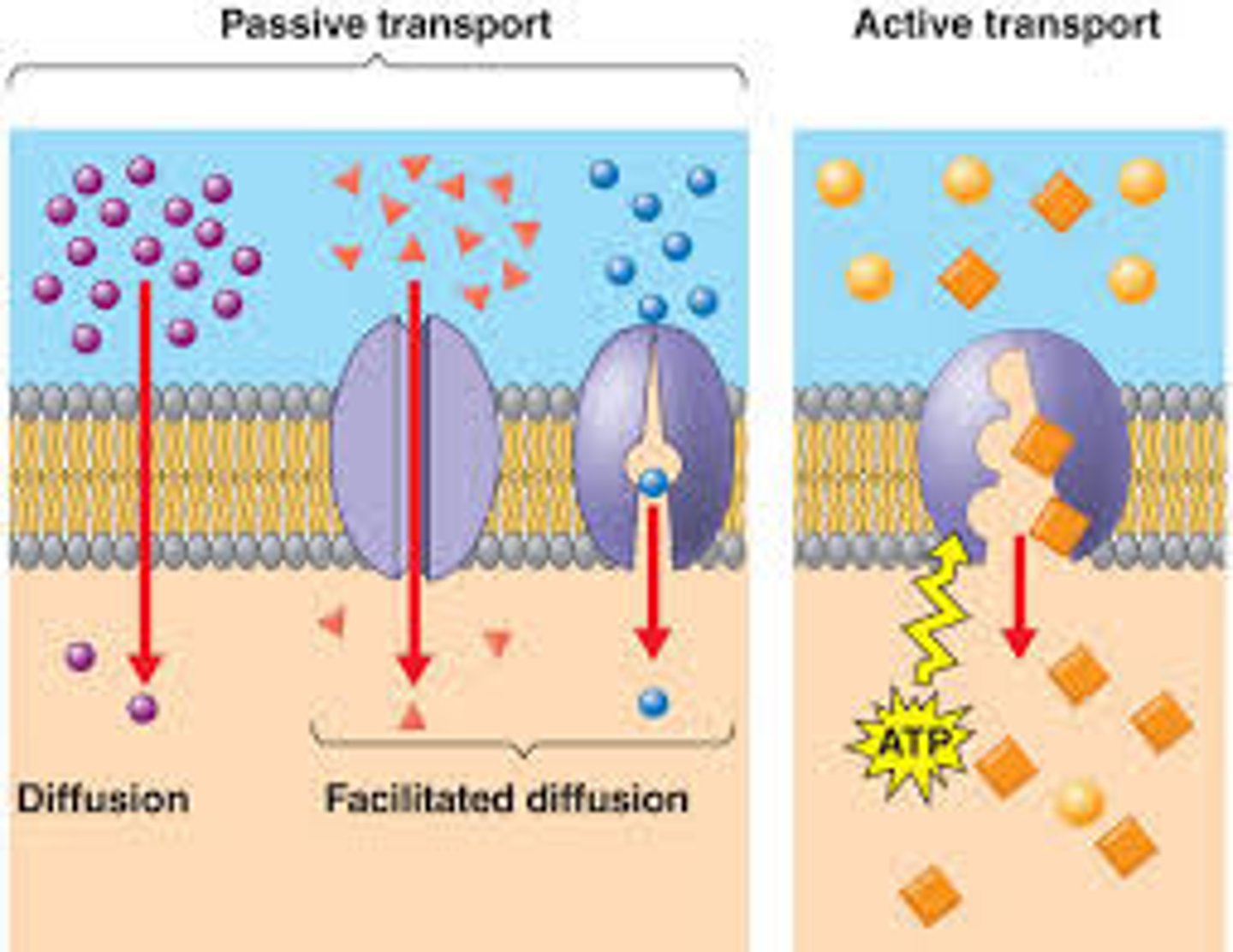
are ribosomes organelles?
no, they are not membrane bound
where does the electron transport chain occur?
inner membrane of mitochondria
stages of cell signaling
receptor activation, signal transduction, cellular response
